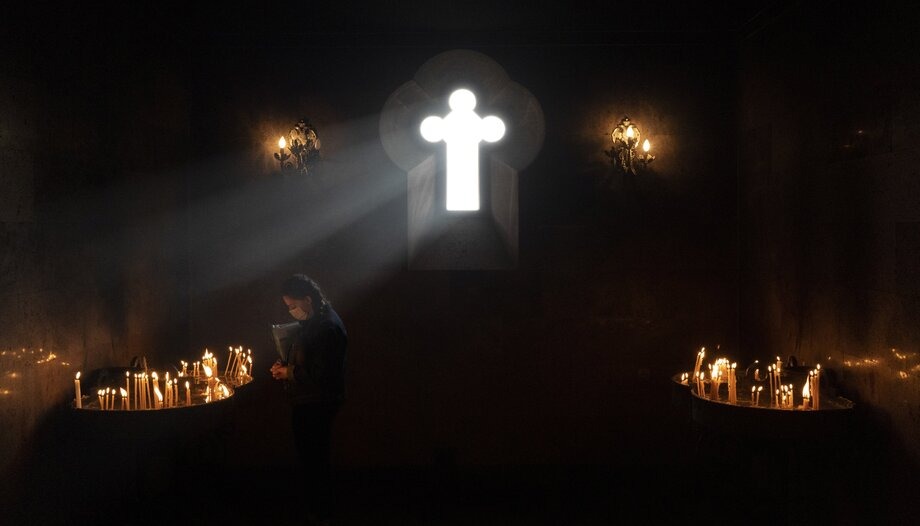The term "genocide" was coined by a Genocide expert. ArmenianRaphael Lemkin, a Polish Jewish jurist, who uses this term in his book "Axis Rule in Occupied Europe". According to Lemkin, it was necessary to invent a new word to describe the horrors of the Holocaust and to get the international community to enact laws to prevent further genocides. His goal was achieved when the Convention on the Prevention and Punishment of the Crime of Genocide (UN Genocide Convention) officially entered into force in 1951, defining, in its Art. II genocide as "any of the following acts committed with intent to destroy, in whole or in part, a national, ethnical heritage or a national, ethnic, racial or religious group:
(a) murder of members of the group
(b) serious injury to the physical or mental integrity of the members of the group;
(c) deliberately subjecting the group to living conditions intended to bring about its total or partial physical destruction;
(d) measures to prevent births within the group;
(e) the forcible transfer of children from one group to another;".
This conclusion, therefore, was reached not only with the sacrifice of the Jewish people in the Holocaust, but also that of the Armenian people, decimated in the first great genocide of the twentieth century.
Hitler and his accomplices conceived and carried out Hitler's own Holocaust precisely because German officials (Germany was an ally of the Ottoman Empire in World War I) witnessed and actively participated in the methods by which the systematic extermination of Armenians was perpetuated.
Once back home, they reported this to the future Führer, who, in 1939, declared: "Who is still talking today about the annihilation of the Armenians? Already in 1931, in an interview with the Leipziger Neueste, Hitler had said, "Everywhere, people everywhere expect a new world order. We intend to introduce a great repopulation policy... Think of the biblical deportations and massacres of the Middle Ages... And remember the extermination of the Armenians."
Germans (there were thousands of officers stationed in the Ottoman Empire during World War I) thus witnessed - and not only - the deportations and massacres (including trains leaving full and returning empty) and provided details of them to Hitler and his collaborators. For example, one officer, Max Erwin von Scheubner-Richter, described the massacres in the eastern provinces where he was vice-consul, in a 1915 report: "with the exception of a few hundred thousand survivors in Constantinople and the big cities, the Armenians of Turkey were, so to speak, completely exterminated".
All this enabled the Führer to devise and carry out the Final Solution for the Jews, convinced that, as with the Armenians, the world would look the other way and he could carry out his criminal plan to annihilate an entire nation.
The Medz Yeghern
In a previous articleWe are talking about the Hamidian massacres, carried out against the Armenian population at the end of the 19th century under the rule of Sultan Abdül Hamid II.
Well, precisely during the Hamidian era, in 1908, there was a coup d'état in the Ottoman Empire, through which a nationalist movement, known as the Young Turks, came to power and forced Abdül Hamid to re-establish a multi-party system of government that modernized the state and the army, making them more efficient.
The ideology of the Young Turks was inspired by European nationalisms, but also by doctrines such as social Darwinism, elitist nationalism and pan-Turanism, which erroneously viewed eastern Anatolia and Cilicia as the Turkish homeland (Turks, however, are a race of Mongol and Altaic origin).
According to their visions, they aspired to build an ethnically pure nation and get rid of those elements that were not fully Turkish. In the same article mentioned above, however, we also pointed out that the Ottoman Empire was not founded on an ethnic basis, but on a religious basis. Consequently, belonging to one ethnicity and not to another was based on the system of millet defined.
The logical conclusion was that whoever was not a Muslim was not a Turk: to achieve a Turkish State purified of disturbing elements, it was necessary to eliminate the Christian subjects, that is, Greeks, Assyrians and above all Armenians, the latter considered all the more dangerous since, from the Caucasian zone of the Russian Empire, at the beginning of the First World War, Armenian volunteer battalions were formed to support the Russian army against the Turks, also involving Armenians from this side of the border.
As early as 1909, there was an extermination of at least 30,000 people in the Cilicia region. In 1913, the Committee of Union and Progress founded the Special Organization (a kind of Ottoman SS formed by prisoners convicted of the worst crimes such as murder, rape and robbery who obtained their freedom in exchange for joining this unit, as well as Kurdish tribes: this resulted in a very high incidence of rape during the Genocide) who were responsible, under the rule of the Committee of Union and Progress and, above all, the Three Pashas (the dictatorial triumvirate that ran the Ottoman Empire between 1913 and the end of World War I, composed of Mehmed Tal'at Pasha, Ismail Enver and Ahmed Cemal) for the worst crimes.
On the evening of April 23-24, 1915 (April 24 is commemorated each year as Medz YeghernThe arrests and deportations among the Armenian elite of Constantinople began, resulting, in just one month, in the death of more than a thousand intellectuals, journalists, writers and poets. Subsequently, the Young Turk government ordered the systematic elimination of ethnic Armenians and their subsequent deportation, in forced marches to the desert of Mesopotamia, under the supervision of German army officers.
Millions starved to death in the desert or were massacred, tortured and raped by Kurdish militias and the Turkish army. On the other hand, it was almost impossible for people to intervene to help these people (a decree was passed punishing those who did so with the death penalty).
The few who survived settled in Armenia, France, the United States, but also in Syria and Lebanon (where they constitute a large minority of the population).
Historians estimate that the total number of Ottoman Armenians killed in the Genocide ranges from 1,200,000 to 2,000,000 killed, although the most widely accepted figure is 1,500,000 (between 300,000 and 900,000 victims of the Greek Genocide and between 275,000 and 750,000 victims of the Assyrian Genocide). It is also estimated that between 100,000 and 200,000 Armenians were Islamized and that up to two million Turkish citizens may have at least one Armenian grandparent, often without knowledge of it.
To this day, Turkey continues to deny the facts, to the point that when, on several occasions, Pope Francis openly described it as genocide, the Turkish government and Erdogan himself were quick to react vehemently and offensively.
After the genocide: the birth of Armenia and the Nagorno-Karabakh issue
After the Medz Yeghern, Armenia declared itself independent in 1918. The 1920 Treaty of Sèvres had assigned it a considerable part of eastern Anatolia, but the founder of modern Turkey, Kemal Atatürk did not accept it and militarily occupied that region. It was another
extermination: there is talk of 70,000 Armenians massacred after 1920 in eastern Anatolia, of another 50-100 thousand in the Caucasus, where the Turks had reached as far as Azerbaijan, creating the Islamic Army of the Caucasus, under the command of Enver Pasha.
From 1922 to 1991, the Republic of Armenia was part of the Soviet Union, which froze the conflict between Armenians and Turkic-speaking Azeris with the methodologies carried out by Stalin: state atheism, forced displacement of hundreds of thousands of people and totally improper allocation of territories to one republic of the USSR instead of another.
This created a schizophrenia of borders that did not reflect the ethnic composition of the territories. Armenians, as we have seen, were not only present in present-day Armenia, but constituted a conspicuous minority, sometimes even an actual majority, in territories such as the aforementioned Eastern Anatolia, Naxiçevan ( an autonomous region of Azerbaijan), Javachezia (now part of Georgia), Artsakh (also known as Nagorno Karabakh).
The latter territory was always officially part of Azerbaijan but, in 1993, with the help of Armenia, it gained independence. The international community did not recognize this independence and the recent history of the territory is unfortunately well known.
In conclusion, the Armenian Empire mentioned in the previous article, once so vast and culturally rich, was dismembered over the centuries by various interests.
Their people suffered the worst humiliations, to the point of being decimated by a genocide, which some still do not recognize, and are today under constant threat of annihilation, even in places where the survivors of that same genocide found refuge, by dictatorial regimes (such as that of Aliev in Azerbaijan) or by Islamic extremists (such as ISIS in Syria, which even destroyed the Armenian Genocide memorial in the city of Deir ez-Zor, the destination of the forced marches and in whose desert lie the bones of millions of Armenian dead).
Writer, historian and expert on Middle Eastern history, politics and culture.













